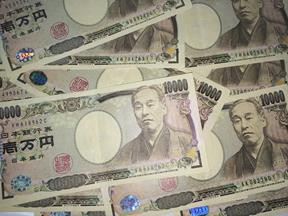As the Bank of Japan (BOJ) prepares to debate ending its negative interest rate policy (NIRP) at its two-day meeting starting Monday, analysts suggest that the central bank's decision will have a limited impact on the roughly $3 trillion of yen Japanese investors have parked in global bond markets and yen trades. Despite the anticipation of better growth in Japan, which has drawn foreign money into Japanese stocks and driven up yen bond yields, the BOJ's potential policy shift is unlikely to trigger a significant repatriation of Japanese funds.
Japanese investors, including life insurance companies, pension funds, banks, and trust firms, have collectively invested trillions of yen overseas in search of higher returns than the near-zero yields available at home under the BOJ's decades-long effort to end deflation. These holdings currently earn yen investors upwards of 5%, making them relatively insensitive to modest changes in the BOJ's rates, such as a 10 or 20 basis point increase.
"I honestly don't think it will have a big impact on flows," says Alex Etra, a senior strategist at analytics firm Exante Data. Gareth Berry, a currency and rates strategist at Macquarie Bank, echoes this sentiment, stating, "I'm not a huge believer of that repatriation story."
Japan's overall foreign portfolio investments stood at 628.45 trillion yen ($4.2 trillion) at the end of December, according to Ministry of Finance data, with more than half in interest rate-sensitive debt assets and most of it long term. Since the BOJ embarked on its quantitative and qualitative easing (QQE) in May 2013, Japanese investment in foreign debt has amounted to about 89 trillion yen, with nearly 60% belonging to pension funds, including the Government Pension Investment Fund (GPIF).
While Japan's big banks and life insurance firms tend to hedge their foreign bond holdings to mitigate currency risk, pension funds routinely do not, making their returns on foreign bonds attractive when translated into yen. Nomura strategist Jin Moteki estimates that serious repatriation will only occur when 20-year Japanese government bond (JGB) yields reach 2%, implying a roughly 50 basis point rise in longer yields.
The implications of the BOJ exiting negative rates on the world of FX carry trades, where investors borrow zero-cost yen and swap it for higher-yielding dollars, depend heavily on the signals the BOJ sends on the trajectory for rates rather than just the first hike. These short-term trades, while highly profitable, are also susceptible to small changes in interest and exchange rates.
James Malcolm, a currency strategist at UBS in London, notes that a change of about 10 basis points in the interest rate gap between dollars and yen has roughly led to a 1% move in the dollar-yen rate in the past two to three years. "Now, when you have a large carry trade built up, the risk is that modest changes cause capitulation and FX moves much further by generating its own dynamic," he warns.
The higher-than-expected average pay increase of 5.28% offered by major Japanese companies during the annual spring wage negotiations has boosted policymakers' confidence that a virtuous cycle of wage growth and price hikes is starting, a crucial factor for Japan to achieve the BOJ's 2% inflation target. This development has increased the likelihood of the BOJ ending its negative rate policy at the upcoming meeting, marking a major shift away from the unprecedented monetary easing that Japan has seen over the past decade.
However, while market expectations of a policy change have grown, some analysts believe the next meeting in April, when the BOJ will update its economic growth and inflation forecasts, will be more suitable for ending the negative rate. As the central bank navigates this pivotal moment in its monetary policy, the world will be watching closely to see how the BOJ's decisions impact the yen, Japanese investments abroad, and the global financial landscape.






